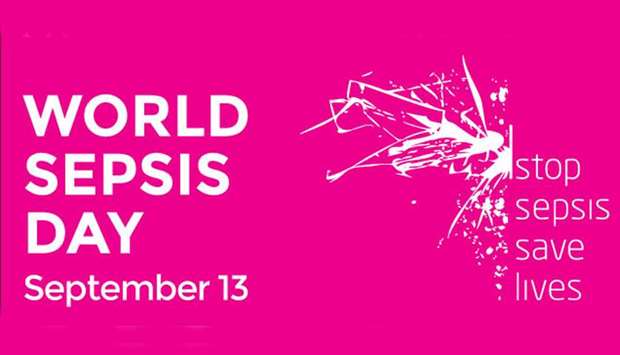World Sepsis Day is celebrated on 13 September, a global initiative to raise public awareness of sepsis, to improve its prevention, recognition and clinical management.
By sepsi we mean – as defined in 2016 by the European Society of Intensive Care Medicine and the Society of Critical Care Medicine – a life-threatening organ dysfunction caused by an inappropriate host response to an infection and represents a global emergency.
Worldwide, about 50 million cases of sepsis occur every year, of which only 20% occur in hospital.
Globally, 1 in 5 deaths is associated with sepsis, for a total of at least 11 million deaths a year, equal to one death every 2.8 seconds. Survivors often experience permanent disabilities.
40% of cases of sepsis refer to children under 5 years of age. In industrialized countries it can cause death in 3-4% of newborns and up to 24% of newborns born in developing countries. Around 680,000 neonatal deaths from sepsis occur worldwide each year, with a particularly high risk in India, Pakistan, Nigeria, Congo, and China.
Neonatal sepsis can also lead to serious clinical manifestations, often associated with long-term irreversible deficits.
The importance of prevention
Specific azons exist to improve the prevention of infections and to combat the fight against sepsis. International organizations, such as World Health Assembly (WHA), The European Society of Intensive Care Medicine (ESICM), The Global Sepsis Alliance (GSA) e The Society of Critical Care Medicine (SCCM), suggest:
- frequent hand hygiene performed correctly
- scrupulous application of infection prevention and control (IPC) measures in treatment settings
- regular updating of healthcare personnel on IPC and antimicrobial-resistant infections
- availability of safe and clean environments for childbirth
- use of available vaccinations.
Anaelle Tannen, Infectious Disease Analyst di GlobalData, comments: “Sepsis is a somewhat preventable illness, and more is needed to educate individuals on the disease and the methods of prevention. Timely intervention is crucial, but the limited awareness surrounding the condition represents a barrier to the early recognition and treatment and therefore contributes to the high mortality rate”.
New possible treatments in development
Today, for the treatment of sepsis, generic antibiotics are usually used along with supportive therapies.
However, according to GlobalData, the lack of drugs specifically used to treat the pathophysiology of sepsis is another urgent unmet need in this area.
Tannen adds: “Only two drugs, La Jolla’s Giapreza (angiotensin II acetate) in 2017, and Shionogi’s Fetroja (cefiderocol) in 2019, have been approved for sepsis in the last 20 years. There have also been a number of high-profile failures in the sepsis market over the recent years, with drugs such as Eisai’s eritoran tetrasodium, AstraZeneca and BTG’s Cytofab (AZD-9773), and AstraZeneca and BTG’s Cytofab failing to meet their primary endpoints in clinical trials.”
According to GlobalData, there are currently 168 drugs in the pipeline, 25 of which are in late-stage development (Phase II, Phase III, or Pre-registration stage). These include Adrenomed AG’s adrecizumab (a monoclonal antibody targeting adrenomedullin), Inotrems SA’s Motrem (a Triggering Receptor Expressed On Monocytes (TREM)-1 inhibitor), and RevImmune SAS’s CYT107 (an Interleukin (IL)-7 agonist), all of which are in Phase II development.
GlobalData forecasts the collective revenue for adrecizumab, motrem and CYT107 to reach $2.2 billion in 2030.
Tannen concludes: “With an expansive number of drugs in the pipeline, there is potential for sepsis to become more treatable in the near future. If approved, candidates such as adrecizumab, Motrem, and CYT107 are expected to supplement existing antibiotic treatments”.


